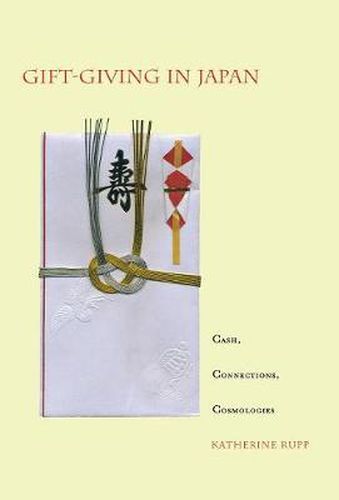Readings Newsletter
Become a Readings Member to make your shopping experience even easier.
Sign in or sign up for free!
You’re not far away from qualifying for FREE standard shipping within Australia
You’ve qualified for FREE standard shipping within Australia
The cart is loading…






Gift-giving is extremely important in Japanese society, not only at personal and household levels, but at the national and macroeconomic levels as well. This work documents the scale, complexity and variation of giving in contemporary Japan. The core of this study is the experience of family representatives, classes, genders, occupations, neighbourhoods and religions. It is based on 18 months’ fieldwork in the Tokyo metropolitan area, as well as short-term research in other parts of Japan. The author also interviewed experts, including the author of gift-giving etiquette books, Buddhist and Shinto priests, department store and funeral homes employees, and workers at Tokyo’s Tsukiji fish market. She participated in neighbourhood festivals, election rallies, house-building rites, and other ceremonies of which gift-giving was an integral part. Recent anthropological interest in drawing a strong contrast between commodities and gifts both reflects and reinforces the conception and the realm of the marketplace. The author argues that Japanese practices of giving and receiving challenge assumptions related to this idea of the gift.
$9.00 standard shipping within Australia
FREE standard shipping within Australia for orders over $100.00
Express & International shipping calculated at checkout
Gift-giving is extremely important in Japanese society, not only at personal and household levels, but at the national and macroeconomic levels as well. This work documents the scale, complexity and variation of giving in contemporary Japan. The core of this study is the experience of family representatives, classes, genders, occupations, neighbourhoods and religions. It is based on 18 months’ fieldwork in the Tokyo metropolitan area, as well as short-term research in other parts of Japan. The author also interviewed experts, including the author of gift-giving etiquette books, Buddhist and Shinto priests, department store and funeral homes employees, and workers at Tokyo’s Tsukiji fish market. She participated in neighbourhood festivals, election rallies, house-building rites, and other ceremonies of which gift-giving was an integral part. Recent anthropological interest in drawing a strong contrast between commodities and gifts both reflects and reinforces the conception and the realm of the marketplace. The author argues that Japanese practices of giving and receiving challenge assumptions related to this idea of the gift.